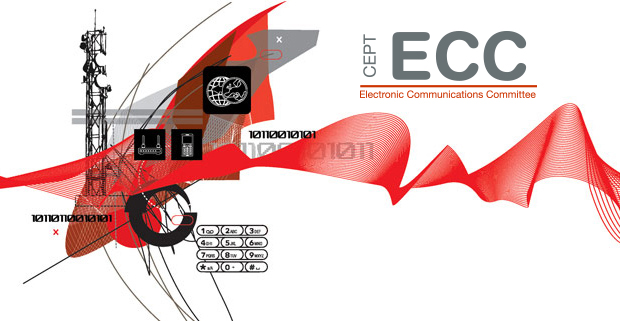- ECC investigates the possibility of using digital equipment in maritime VHF voice communications
- STIR/SHAKEN – Europe watches with interest as the United States and Canada roll out a solution for authenticating calling line identification
- Quo Vadis? Fixed Service evolves towards more efficient spectrum use
ECC Newsletter May 2020
ECC investigates the possibility of using digital equipment in maritime VHF voice communications
Very high frequency (VHF) maritime communications play a vital role in enhancing ship safety and the efficient operation of ports. Indeed, ECC Decision (19)03 states that "analogue voice telephony is the most important form of communication in the maritime mobile service as a safety related service…".
Yet, in maritime bands the introduction of new digital communication channels for data is now potentially limiting the availability of analogue VHF voice channels. This is a very different experience to many areas of communication where digital equipment has resulted in greater efficiency and improved services, for example with GSM, or digital TV. More voice channels in the maritime services could be made available if they were to become digital.
Several technology options could be used for maritime VHF voice communications. The technical candidate solution is dPMR (digital Private Mobile Radio) – a technology currently used in land mobile communications as a replacement for analogue FM voice communication in both VHF and UHF bands. dPMR has been standardised by ETSI, the European standards organisation. However, it is worth noting that replacing maritime analogue VHF radio must be done in such a way that both the “old” and new technologies can be used in adjacent spectrum.
The first VHF allocations for shipping were made by the ITU, the UN’s specialised agency for information and communications technology, in 1947. Twelve years later, in 1959, the ITU-R Radio Regulations Appendix 18 were introduced. Appendix 18 contains a table of transmitting frequencies in the VHF maritime mobile band as shown in Figure 1 below. The allocated frequencies are in the frequency band 156.025 MHz to 162.025 MHz. The channelisation is 25 kHz.

Figure 1 - ITU-R Radio Regulation Appendix 18
The most recent ECC deliverable relating to the maritime frequency bands is ECC Decision (19)03 – on the harmonised usage of the channels of the Radio Regulations Appendix 18 (transmitting frequencies in the VHF maritime mobile band).
The Decision states that "with the exception of the automatic identification system (AIS) on channels AIS1 (161.975 MHz) and AIS2 (162.025 MHz) and digital selective calling (DSC), currently all the remaining listed channels are used for analogue voice communication. With the digital data exchange allocations in future, some channels will be used for data transfer and not for voice communication any longer. New digital radios need to be developed, which is different equipment than the current voice communication radios. As the result, the frequencies in the VHF maritime mobile band will be shared by four different systems: analogue voice telephony, DSC, AIS and digital data exchange."
Following the publication of this Decision, the ECC's Working Group Frequency Management (WG FM) agreed to start work on a new ECC Report. This would examine the implementation of digital voice radio telephony in the VHF maritime mobile band. The report is not expected to be published until October 2021, but the initial assumption is that four digital channels of 6.25 kHz can occupy the same radio spectrum as the single 25 kHz analogue voice channel.
In addition to the practical trials of digital maritime radio apparatus, the WG FM's maritime group (FM58) will consider several issues relating to the potential introduction of digital voice. Among them are:
- Technologies must have in principle a clear migration path both from current analogue voice services to new digital voice services by allowing both digital and analogue services to co-exist in the same transceiver for the duration of the entire migration period.
- Digital voice quality should be similar or better than the analogue voice quality, especially at the edge of the radio coverage where the radio signals are weaker.
- Current technology/digital equipment must be able to detect an analogue or digital signal and switch over automatically.
- Radio transceivers from different manufacturers must be interoperable.
- The likelihood of inadvertent transmissions being eliminated after the remote shutdown of transceivers must be considered.
- Possible enhancements to the voice service, such as a form of messaging (e.g. SMS), should be considered.
So far, practical trials of digital marine VHF voice communication have been undertaken in Estonia and the Netherlands
Estonia
In Estonia, evaluation measurements were carried out in the frequency range f = 156,7-156.8 MHz (or more precisely f = 156,709375 - 156,7625 MHz; channel K = 15;74). Figure 2 below illustrates the distribution of channels and Figure 3 illustrates the channel block.

Figure 2 - Distribution of channels
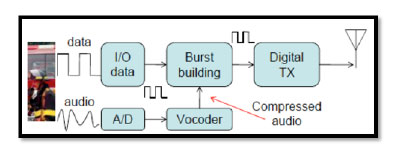
Figure 3 - Channel block-diagram
The quality of speech was assessed using a 5-point scale (1 = good without interruption; 2 = good with disruptions; 3 = distorted without interruption; 4 = distorted with interruption; 5 = impossible to understand). Measurements were made of the signal-to-noise ratio (SNR - Signal power or averaged level during transmission/noise level without transmission) with SNR assessed in adjacent channels.
The measurements were carried out between a shore station, a vessel and handheld stations around Tallinn Bay.
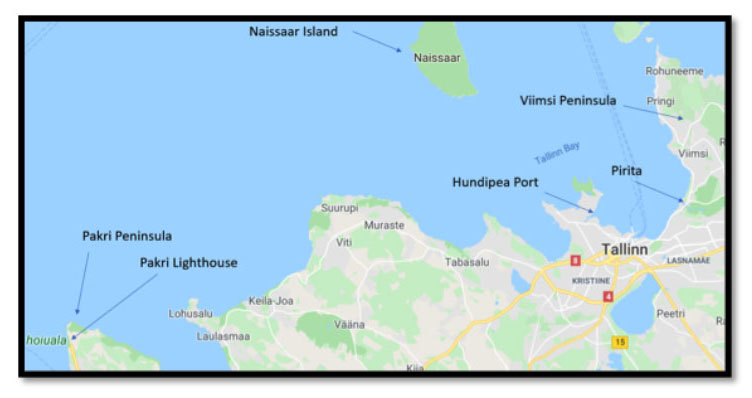
Figure 4 - Map of Tallinn Bay (Source: Google maps)
A vessel set out from Pirita along the edge of the Viimsi peninsula around Naissaar island in the direction of Pakri peninsula. When leaving Pirita, the quality of the digital communication with Hundipea port was assessed until the connection was lost. The signal was also tested against handheld radios, one in a vehicle, one on an observation platform and another in the Pakri lighthouse. Tables 1 and 2 below provide an evaluation of the quality of both the digital and analogue communications.
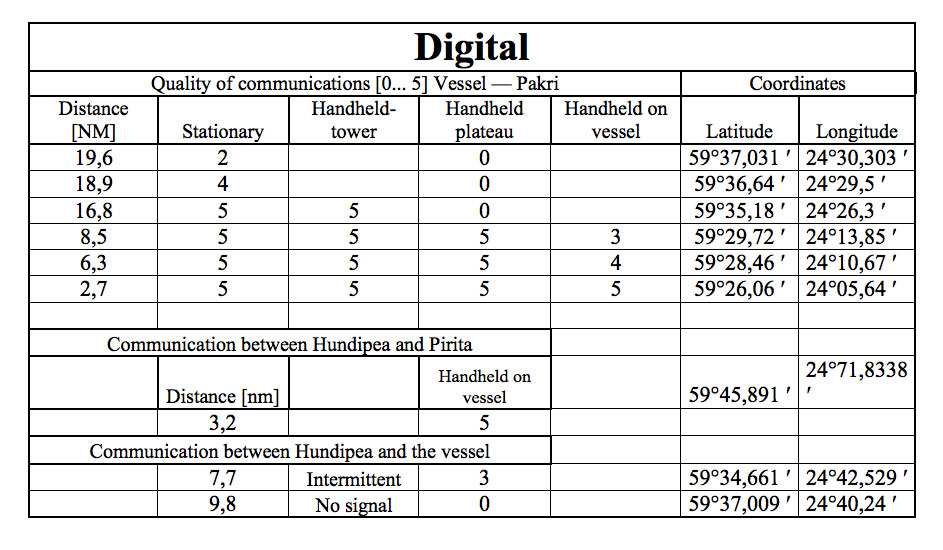
Table 1 on the evaluation of the quality of digital communications
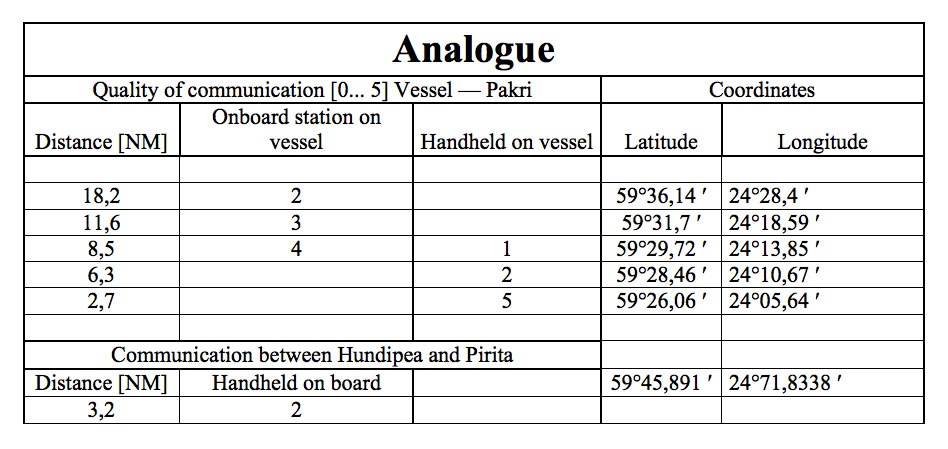
Table 2 - Quality of analogue communications
Participants in the test were generally positive about the introduction of digital communication with the range being the same (or better) than the range for analogue communication. At the maximum distances, the digital communication remained understandable (d = 19,6 NM) while the analogue communication experienced very high noise and was not understandable.
During the digital switchover period, when the digital station and the analogue station were very close together, the digital station signal overlapped the analogue channel. This did not cause any interference during testing.
The Netherlands
In the Netherlands, the trials were conducted around the Port of Rotterdam. The port authority assisted with the trial and made available a de-commissioned vessel traffic service (VTS) centre in the middle of the city and one of their support vessels.
During the test, the Radiocommunication Agency Netherlands (Agentschap Telecom) monitored the digital apparatus to ensure it remained compliant with the relevant ETSI Standard (ETSI TS 102.658) and Radio Regulations Appendix 18. The frequency 162,500 MHz was used for analogue communication and the frequency 162,534375 MHz for digital communication (dPMR).
The two positions from where the monitoring took place were approximately 4 km from the VTS centre – Wilhelminahaven/Nieuwe Waterwegstraat and the Karel Doormanweg, which are near the waterway.

Figure 5 - Map of Rotterdam Port (Source: Google maps)
Testing was conducted between the VTS and the support vessel as it travelled around the harbour. The initial findings were:
- The range of both digital and analogue communications was very similar. The quality deteriorated due to the horizon/line of sight limitations that all current VHF radios encounter;
- In a specific area of the fairway (i.e. a navigable channel in a harbour), the quality of both digital and analogue communications deteriorated because of large storage tanks standing between the VTS and vessel which probably blocked or reflected the signal;
- When the quality deteriorated on the digital channel, connectivity was lost altogether or a "metallic/robotised" sound was experienced, whereas when it happened on the analogue channel, it caused noise;
- During the trials, interoperability between equipment from two different manufacturers was demonstrated.
The users and the observers found the digital voice quality the same or better than the analogue one. The users reported back that listening to digital voice with noise reduction made it easier and less intensive to listen. The users concluded that the digital transmission of voice enabled the same functionality of operation of the ship as for an analogue radio system.
In summary, the trials presented some positive outcomes. The completion of the ECC's Report in October 2021 is expected to assist the International Maritime Organization and ITU in assessing the benefits of implementing digital voice radio telephony in the VHF maritime mobile band.
It is expected that the maritime community will present at WRC-23 their evolution plan and apply for an agenda item for the evolution of the very high, medium and high frequency maritime band. This in turn should lead to WRC-27 amending Radio Regulations Appendix 18 to facilitate a new maritime analogue/digital channel plan. While it is still early days in this process, the signs are positive. Watch this space.
Robin Donoghue
Frequency Management Expert
European Communications Office


